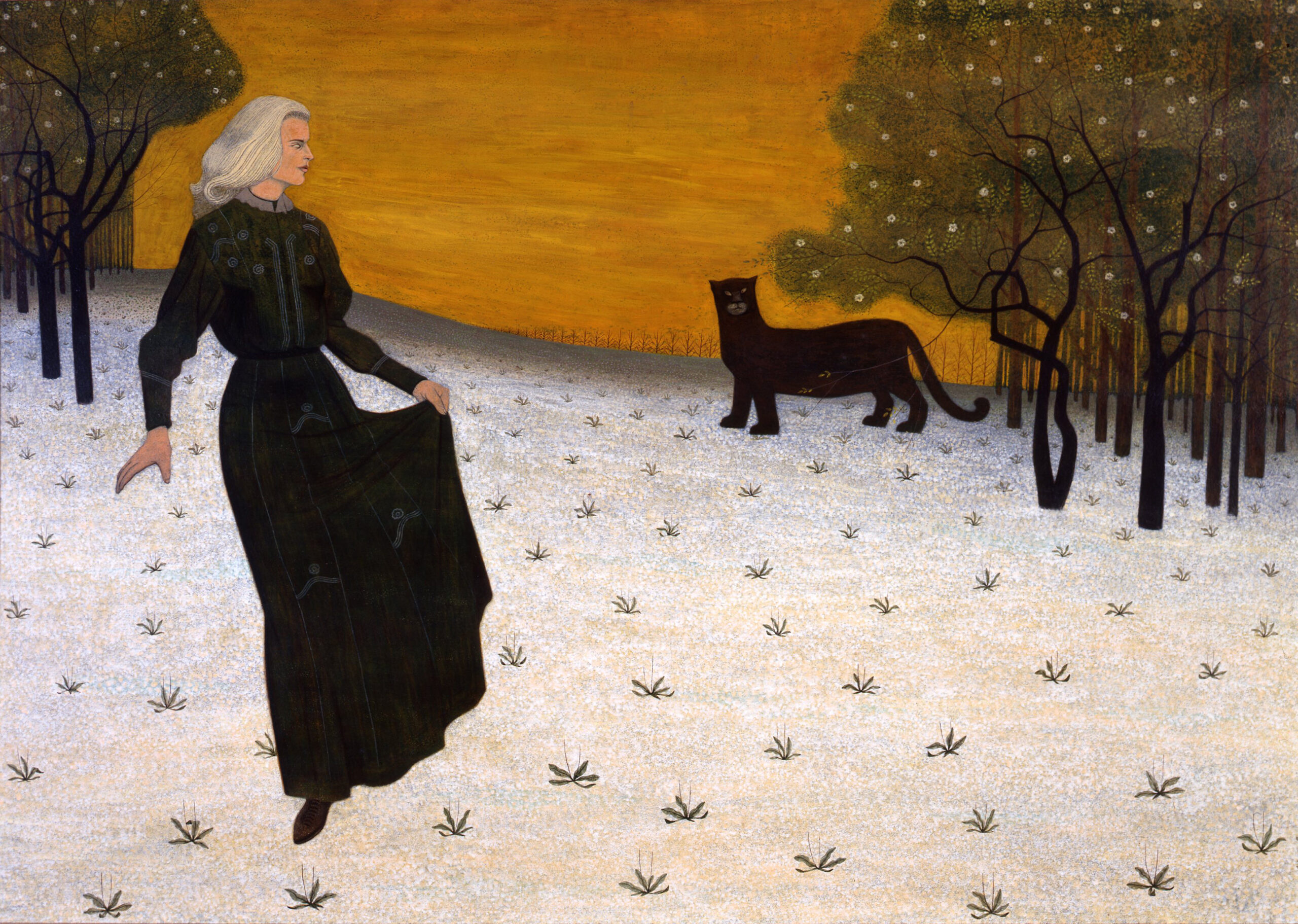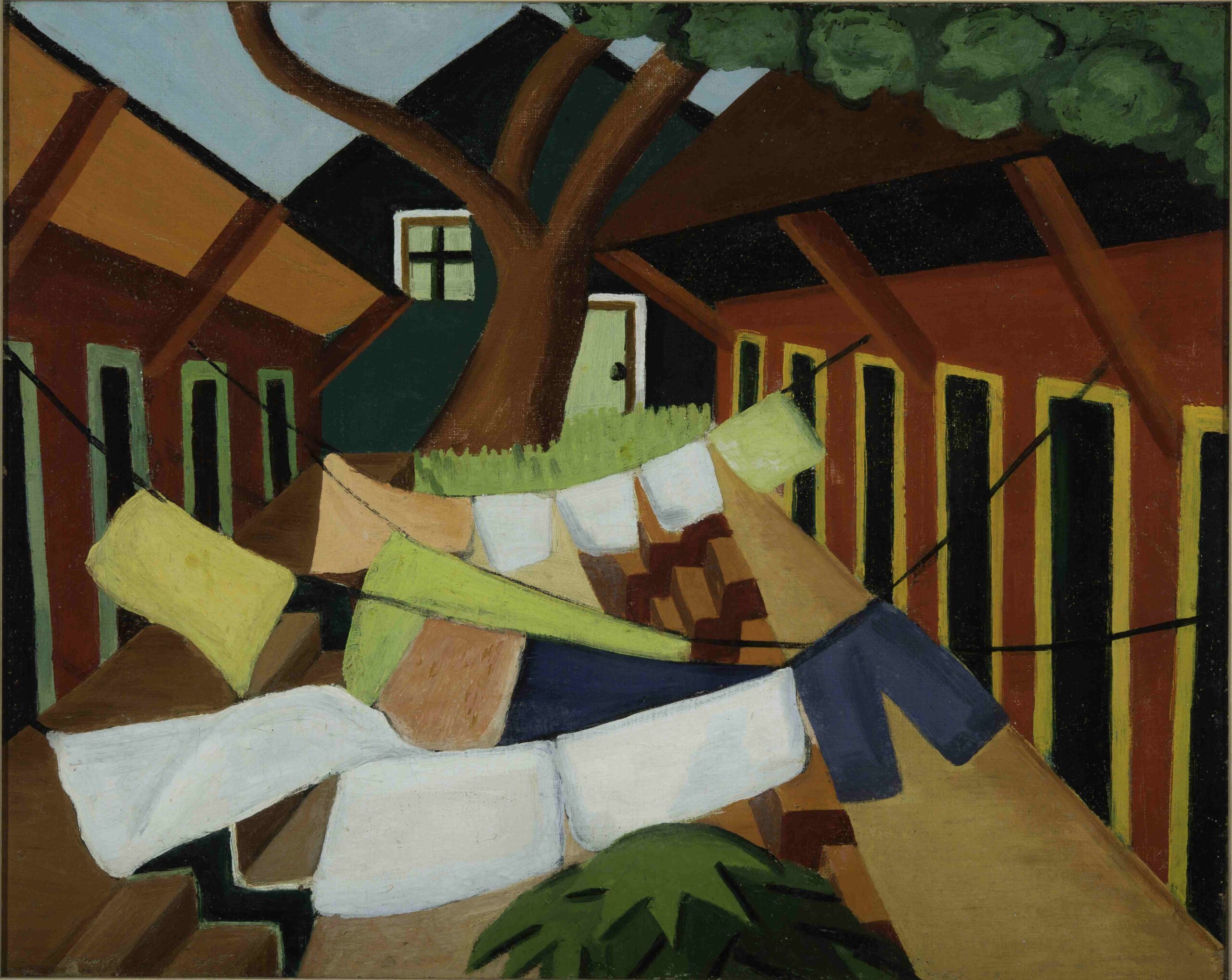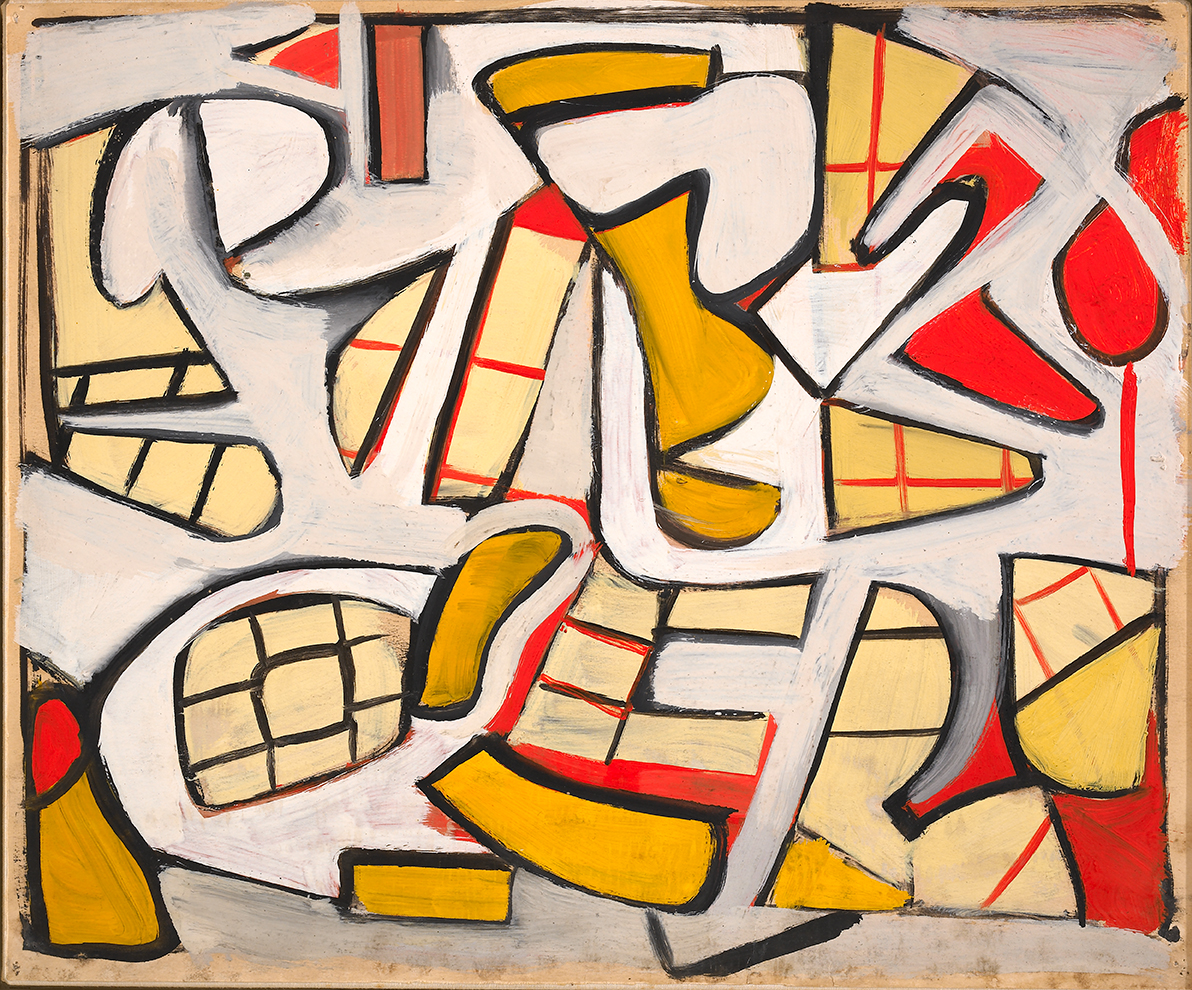Frist Art Museum January 26 through April 28, 2024.
Dixon Gallery and Gardens, Memphis July 2024
The Mint Museum , Charlotte, North Carolina,October 2024.
The Frist Art Museum presents Southern/Modern, the first comprehensive survey of paintings and works on paper created in the American South between 1913 and 1955 that reflect a period of change and upheaval across the region. Organized by the Mint Museum in collaboration with the Georgia Museum of Art, the exhibition will be on view in the Frist's Ingram Gallery from January 26 through April 28, 2024.

Carroll Cloar. A Story Told by My Mother, 1955. Casein tempera on Masonite; 28 3/8 x 40 1/4 in. Memphis Brooks Museum of Art, Memphis, TN. Bequest of Mrs. C.M. Gooch, 80.3.16. © Estate of Carroll Cloar
Southern/Modern features more than one hundred works by artists such as Carroll Cloar, Aaron Douglas, Caroline Durieux, Will Henry Stevens, Alma Thomas, and others who worked in states below the Mason-Dixon line and as far west as the Mississippi River. It also includes artists from outside the South, such as Josef Albers, Jacob Lawrence, Elaine de Kooning, all of whom spent time at North Carolina's experimental Black Mountain College, as well as Thomas Hart Benton, Elizabeth Catlett, and others whose works reflect on Southern experiences from a distance.
"The exhibition explores the history of socially and stylistically progressive art in the American South," writes Frist Art Museum chief curator Mark Scala. "Treating a subject long neglected by art historians and museums outside the region, Southern/Modern shows how in the South as elsewhere, the goal of modernism was to lead the way toward a more open-minded and equitable society." To explore this idea, the exhibition curators Dr. Jonathan Stuhlman, senior curator of American art at the Mint Museum and Dr. Martha R. Severens, an independent scholar, included important works by women and people of color, with styles ranging from American scene painting and regionalism to cubism and abstraction.
Thematic groupings of works weave together the region's rich cultures, telling stories of agriculture and industry, class division and racial injustice, natural beauty, and stylistic innovation. The exhibition begins with a section titled "Southerners," a look into the lives of people engaged in everyday activities—chatting, out for a stroll, or shopping. While challenging stereotypes often ascribed to people from this region, this section does illustrate the racial divide that has marked the South and the nation for centuries, with only a few images showing Black and white people together in the same setting.
Works in "Landscape as Metaphor" explore the South's rural and agricultural identity through scenes of natural beauty from the Ozarks to the Carolina low country. Several paintings also feature views of environmental abuse and neglect, the desolate landscape a metaphor for the hardscrabble lives of the people living in these places. For artists in this section, says Scala, the land was not simply defined as topography, but "is a stage for memory, legend, and history. Exemplifying this is Carroll Cloar's A Story Told by My Mother, illustrating family lore in which a dreamlike landscape is the setting for an encounter between the ethereal figures of a woman and a panther."

Oil on canvas; 16 x 20 in. Mississippi Museum of Art, Jackson, MS. Gift of Dusti Bongé Art Foundation, Inc., 1999.012.
© Dusti Bongé Art Foundation

Enamel on paper mounted on canvas; 26 x 32 in.
The Heckscher Museum of Art, Huntington, NY. Museum purchase, 1991.20
"Religion and Ritual" includes several works visualizing the cohering power of faith in Black communities. Several artists were inspired to depict Black spirituals in works such as John McCrady's version of Swing Low, Sweet Chariot and Malvin Gray Johnson's Roll, Jordan, Roll.
Artists in the section "Segregation and Jim Crow" portray a darker side of Black experience in the South, creating powerful indictments of segregation in public life, on the beach, in the military, and in the town square. References to racial violence include Loïs Mailou Jones's powerful portrait Mob Victim (Meditation) and Eldzier Cortor's devastating painting Southern Souvenir, representing two fragmented Black bodies as if they were shattered statuary.
Laborers—farmers, coal miners, fishermen, and factory workers—are spotlighted in the next section. During the Great Depression, many artists sought to bring the dire conditions of the working poor to wider public attention, as seen in Thomas Hart Benton's Ploughing it Under and John Biggers's drawing The Harvesters. Other works depict the effects of industrialization in cities like Atlanta and Birmingham, as tenant farmers frequently moved there seeking better working conditions only to be trapped in industries that had moved south in search of cheap labor. Yet, the period covered by the exhibition saw tremendous growth in the region's economy and a dramatic expansion of its cities leading to a revitalization that continues unabated today in places like Nashville.
The final two sections, "Planting New Seeds: Colonies and Schools" and "Many Modernisms," feature works that are more abstract by artists from outside the South or Southerners who had gone to cities like New York and Paris to learn about new movements and experience firsthand the works of luminaries such as Paul Cezanne, Henri Matisse, and Pablo Picasso. Several artists in this section traveled south to teach at schools like the University of Georgia, Richmond Polytechnic Institute, and most notably Black Mountain College near Asheville, North Carolina, which boasted an international faculty and was lauded for its interdisciplinary approach to modern practices.
Full of vibrant, often emotionally charged works, Southern/Modern shows how in the South, as elsewhere, modern artists linked social and aesthetic progress, hoping to change the way people saw their world. Scala writes, "While the paintings in the exhibition's last sections reflect aspects of the region, their subjects are often so generalized that they could be from anywhere—modernism in the South was truly a part of an international phenomenon. Yet, what distinguishes the art of this region from other modernisms is the story that it tells of a transformative period in America's cultural identity. How does progressive art, which for many people symbolized the nation's trajectory toward modernization, survive and even thrive in a part of the country known for its resistance to change?"
Exhibition Publication
The exhibition is accompanied by a fully illustrated catalogue, published by the University of North Carolina Press, containing more than 175 rich illustrations and a dozen essays by contributing curators and leading art scholars.
